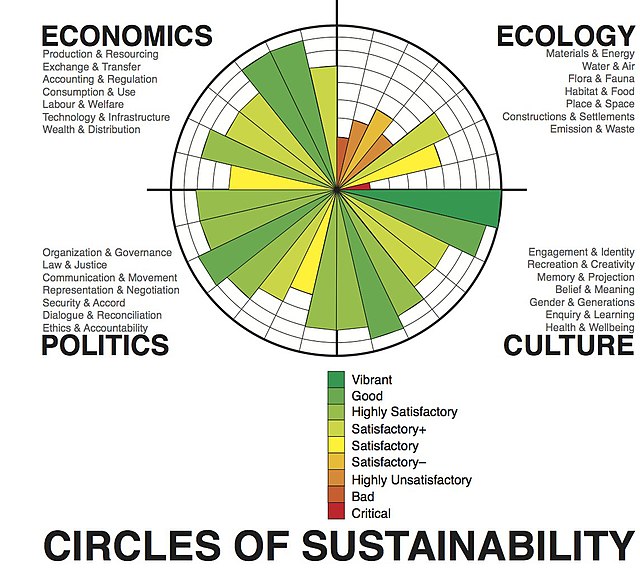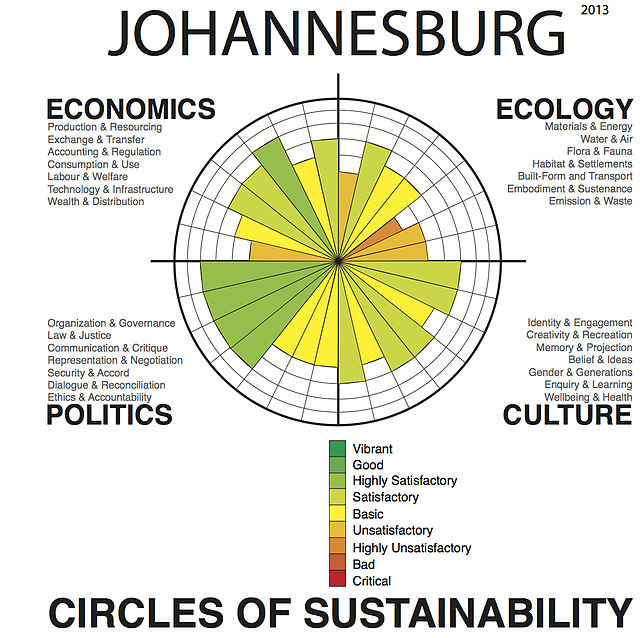Circles of Sustainability
Circles of Sustainability is a method for understanding and assessing sustainability, and for project management directed towards socially sustainable outcomes. It is intended to handle 'seemingly intractable problems' such as outlined in sustainable development debates. The method is mostly used for cities and urban settlements.
A Circles of Sustainability representation – in this case for Melbourne in 2011.
Johannesburg Profile, Level 2, 2013
São Paulo Profile, Level 1, 2012
Delhi Profile, Level 1, 2012
Sustainability is a social goal for people to co-exist on Earth over a long time. Definitions of this term are disputed and have varied with literature, context, and time. Sustainability usually has three dimensions : environmental, economic, and social. Many definitions emphasize the environmental dimension. This can include addressing key environmental problems, including climate change and biodiversity loss. The idea of sustainability can guide decisions at the global, national, and individual levels. A related concept is that of sustainable development, and the terms are often used to mean the same thing. UNESCO distinguishes the two like this: "Sustainability is often thought of as a long-term goal, while sustainable development refers to the many processes and pathways to achieve it."
The wedding cake model for the sustainable development goals is similar to the nested ellipses diagram, where the environmental dimension or system is the basis for the other two dimensions.
Social justice is just one part of social sustainability.
Urban sustainability analysis of the greater urban area of the city of São Paulo using the 'Circles of Sustainability' method of the UN and Metropolis Association.
The doughnut model, with indicators to what extent the ecological ceilings are overshot and social foundations are not met yet







